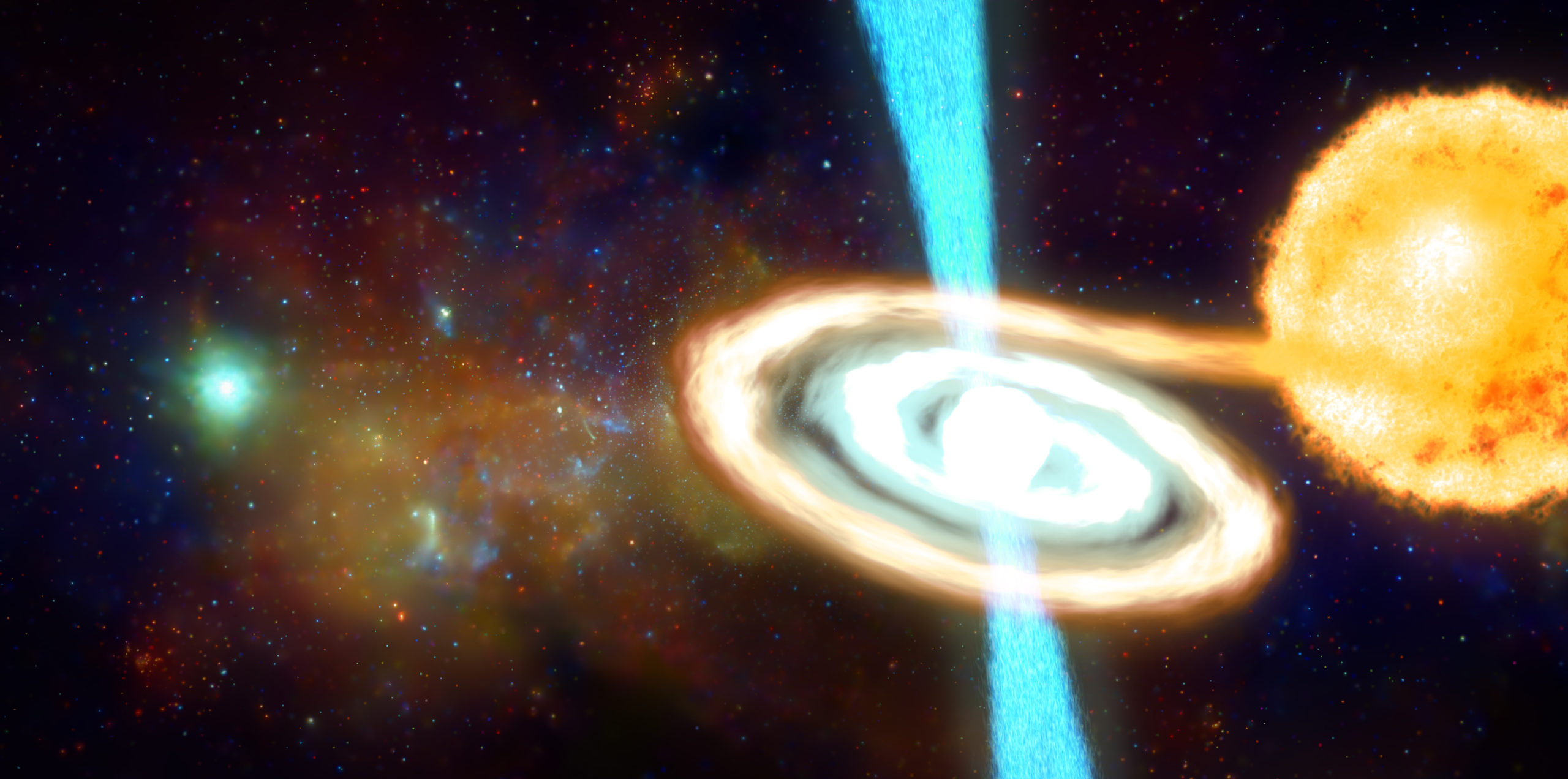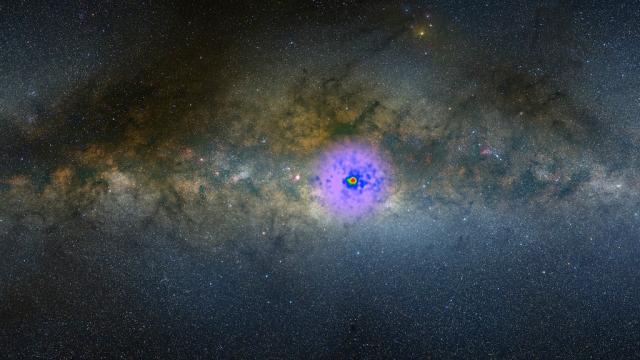Count up all the stuff in a galaxy and you should have a pretty good understanding of how much light is being emitted. But that doesn’t seem to be the case for our own Milky Way. Our galaxy has a source of extra gamma rays, the highest-energy light, right in its centre. And scientists don’t know where all that energy’s coming from.
Image: NASA; A. Mellinger/Central Michigan University; T. Linden/University of Chicago
We’ve known about the gamma ray excess since 2009, and groups using the Fermi Large Area Telescope, the main instrument on a gamma ray telescope orbiting the Earth, continue to spot it. Could the light be coming from dark matter? Aliens? After some modelling, scientists think they have the answer: Pulsars, incredibly dense, rapidly-spinning cores of ancient stars that shoot beams of radiation out like lighthouses. (And, sorry, I’m not talking about fast radio bursts, as cool and mysterious as they may be.)
To figure out what could be causing the eerie gamma glow, the researchers needed a more accurate model of unresolved portions of the galaxy. So, they made a list of 400 objects in the centre of the galaxy that could be contributing to the anomaly, then whittled that list down to 66 pulsar candidates. They put this updated data back into their computer simulation, and it seemed to account for the the excess radiation.
“From our findings, there should be this population of pulsars in the galactic bulge around the galactic centre,” study author Mattia di Mauro from the from the Kavli Institute for Particle Astrophysics and Cosmology (KIPAC) at Stanford University told Gizmodo. “These should explain the [excess] energy.”

Artwork: NASA/CXC/University of Massachusetts/D. Wang et al.; Greg Stewart/SLAC National Accelerator Laboratory
This model might seem to be the most accurate interpretation for the unusual gamma ray light, but there are caveats — for one, the paper was posted on the arXiv server as a preprint, meaning other scientists haven’t had a chance to give input yet. Additionally, said di Mauro, the researchers determined which of their 400 sources were actually pulsars using gamma rays. It’s much easier to determine whether a pulsar is really a pulsar with a radio telescope, though, so the team will make those radio measurements next in order to verify their findings.
As for the other theories, the researchers also tested whether or not the excess could have come from long sought-after dark matter particles, a popular prior theory. Dark matter is the mysterious stuff that seems to account for 80 per cent of the measured gravity of the universe — but according to the new model, it wasn’t the source of this mysterious light.
“In our paper… we find that if we use dark matter as an interpretation, the distribution of pulsar-like sources is not consistent with what we have in the real sky.”
One researcher who wasn’t involved with the story found the rejection of dark matter exciting. “We all want dark matter to be there but I like that there’s a systematic and careful analysis, asking if there are more astrophysical sources we weren’t good enough at finding before,” Renée Hložek, Assistant Professor of Astrophysics at the University of Toronto told Gizmodo. “I don’t think dark matter’s dead, yet but I’m glad astrophysics is being counted on more to explain these anomalies.”
After all, that’s what science is about, she said. “We keep figuring out what dark matter isn’t until we figure out what it is.”
